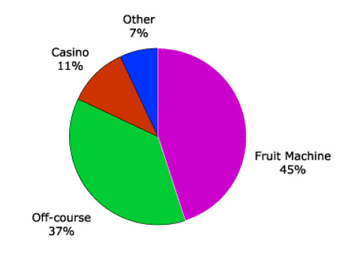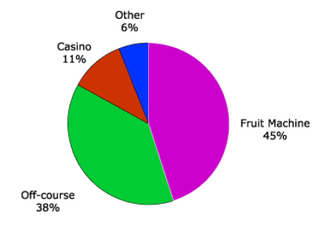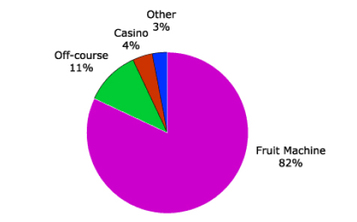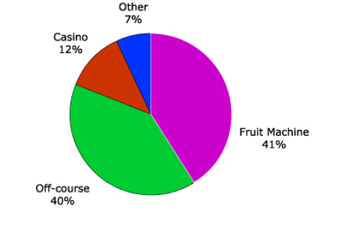Research has attempted to determine whether individual characteristics such as gender and age make people more or less susceptible to developing problem gambling behaviors (Greenberg, Lewis, & Dodd, 1999; Wood & Griffiths, 1998). Men, for example, display a greater tendency to be problem gamblers (Greenberg et al, 1999). Similarly, a recent WAGER reported on a study demonstrating that relative to women, men tend to start gambling earlier and tend to progress to problem levels of gambling behavior less quickly. The current WAGER summarizes a study that suggested gender and age differences in gaming preferences among GamCare phone hotline callers (Griffiths, Scarfe, & Bellringer (1999).
During the first year (October 1997 – October 1998) of the UK GamCare phone hotline, trained counselors documented caller characteristics that were volunteered by callers. Information concerning gaming preferences, age, gender, and health were recorded. The WAGER focuses on gender and age differences in gaming preferences. A total of 1729 calls were recorded. Of these, 1644 callers identified their game of choice.
Results of Griffiths et al. indicated that hotline callers were more likely to report fruit machine (slot machine) as their game of preference (Figure 1).
Figure 1: Help Seeking by Gaming Preference (N=1644)
The authors interpreted the high number of help seekers who report fruit machine gambling as their game of preference to mean that fruit machine gambling is the most troublesome form of gambling. However, methodological issues call this interpretation into question. Although the authors did not provide enough information to completely separate Male Adults, Female Adults, Male Adolescents, and Female Adolescents, game preference differed across gender and age. Specifically, game preferences by women reflected the overall pattern (see Figure 2) but preferences for men were not similar (Figure 3).
Figure 2: Help Seeking of Women by Gaming Preference (N=87)
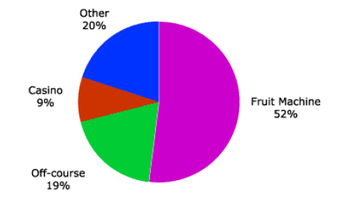
Figure 3: Help Seeking of Men by Gaming Preference (N=1557)
Among women, there was a 32% difference between fruit machine preference and the next most often preferred game. The difference between the first and second most popular games was only 7% among men. Similarly, although adolescents overwhelmingly reported fruit machine gambling as their game of preference (Figure 4), this difference was drastically reduced for adults (Figure 5). Specifically, a 71% difference between fruit machine preference and the next largest preference existed for adolescents. In contrast, this difference was only 1% for adults. Thus, the dominance of the fruit machine as the preferred game was not observed for all demographic groups.
Figure 4: Help Seeking of Adolescents by Gaming Preference (N=156) Figure 5: Help Seeking of Adults by Gaming Preference (N=1488)
Figure 5. Help Seeking of Adults by Gambling Preference (N=1488)
Although this research provides new information about the nature of help seekers, this study is not without methodological limitations. First, it is difficult to tell whether or not the first year of a phone hotline in the UK will be representative of future years or other countries. The small number of women in this sample adds to the possibility that the findings associated with this sample might not generalize well. Data collection in this study relied on selective self-report from individual calls and repeat calling among individuals was not assessed. Thus, the sample could be biased by frequent repeated calls by a small number of fruit machine callers. Finally, because of the large number of callers expressing a preference for fruit machine gambling, the authors suggested that fruit machine gambling is most problematic for gamblers. That conclusion exceeds the designs of the study. Individuals who show a proclivity for fruit machine gambling may also show a proclivity for seeking help through the use of hotlines.
By being the first to report on phone hotline characteristics in the UK, Griffiths, Scarfe, and Bellringer, break new ground. The limitations mentioned above do not reduce the importance of the observations that can be drawn from this data. These observations could lead to more refined hypotheses and research that will ultimately identify individual difference characteristics in help seeking and help avoiding. It is imperative that we recognize individuals’ tendencies to seek out, and conversely to avoid, help. Doing so might allow researchers, policy makers, and clinicians to target and market to those who are at increased risk for problem gambling, but might not seek help on their own.
References
Greenberg, J. L., Lewis, S. E., & Dodd, D. K (1999). Overlapping addictions and self-esteem among college men and women. Addictive Behaviors, 24 (4), 565-571.
Griffiths, M. D., Scarfe, A., Bellringer, P. (1999). The UK Nation Telephone Gambling Hotline-Results on the first year of operation. Journal of Gambling Studies, 15(1), 83-90.
Wood, R. T. A., Griffiths, M. D. (1998) The acquisition, development and maintenance of lottery and scratchcard gambling in adolescence. Journal of Adolescence, 21(3), 265-273.
The WAGER is a public education project of the Division on Addictions at Harvard Medical
School. It is funded, in part, by the National Center for Responsible Gaming, the
Massachusetts Department of Public Health, the Addiction Technology Transfer Center of
New England, the Substance Abuse and Mental Health Services Administration, and the
Center for Substance Abuse Treatment.





